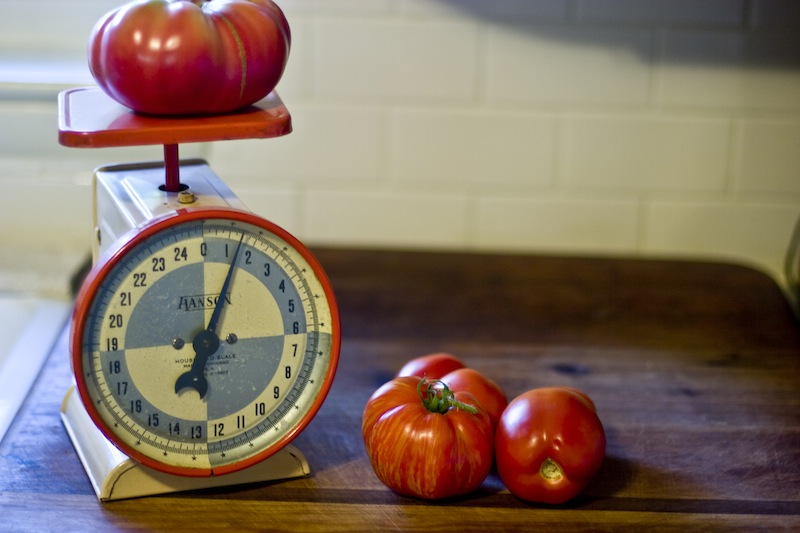When it came to average fruit weight, I decided to calculate this for each harvest, and then put these observations through analysis. In other words, I have five observations for each variety for this parameter. Since we’re looking at the productivity and marketability of these tomato varieties, I decided to calculate average fruit weight using only the marketable fruit, since this is more what a farmer cares about (as long as they aren’t losing too much weight in unmarketable fruit).
Since fruit weight is a continuous variable, we get to do (my favorite) standard ANOVA to determine if differences exist. Well, at least we want to do this. For the average fruit weight data, our distribution is far from normal. ANOVA assumes normal distribution, and while it’s relatively forgiving, this data strays too far. I attempted every data transformation I could think of (square roots, log, ln, etc.), but nothing transformed the data into something acceptably normal. There’s not a whole lot I can do in this case. I think some of the issues stem from trialing a wide range of market classes of tomatoes (ie: big slicers with small salad tomatoes) and not doing so evenly. Oh well! For now, I will rank the varieties from largest to smallest and call it sufficient.
| Variety | Average Mass of One Marketable Fruit (oz.) | Rank |
|---|---|---|
| (E) Estate | 7.70 | 1 |
| (K) Mt. Merit | 7.66 | 2 |
| (A) Home Stoop | 7.01 | 3 |
| (G) Damsel | 6.31 | 4 |
| (H) Crimson Sprinter | 4.02 | 5 |
| (B) OSU S200 | 3.98 | 6 |
| (C) Stellar | 3.85 | 7 |
| (I) Plum Regal | 3.65 | 8 |
| (F) Plum Perfect | 3.55 | 9 |
| (J) OSU LB8-7 | 2.06 | 10 |
| (D) Matina | 1.63 | 11 |

Leave a Reply